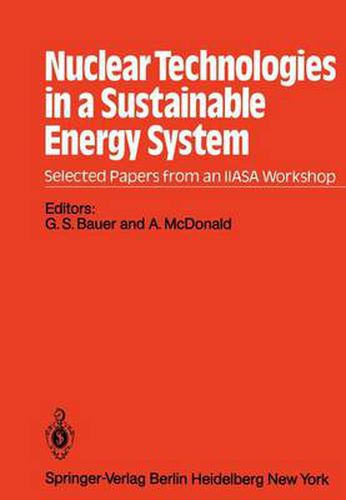Readings Newsletter
Become a Readings Member to make your shopping experience even easier.
Sign in or sign up for free!
You’re not far away from qualifying for FREE standard shipping within Australia
You’ve qualified for FREE standard shipping within Australia
The cart is loading…






This title is printed to order. This book may have been self-published. If so, we cannot guarantee the quality of the content. In the main most books will have gone through the editing process however some may not. We therefore suggest that you be aware of this before ordering this book. If in doubt check either the author or publisher’s details as we are unable to accept any returns unless they are faulty. Please contact us if you have any questions.
In March 1981 the International Institute for Applied Systems Analysis (IIASA) published the results of a global energy study looking fifty years into the future: Energy in a Finite World: A Global Systems Analysis (Cambridge, Massachusetts: Ballinger Publishing Co. , 1981)*. Not surprisingly, this book raises almost as many questions as it answers; thus, it defines a broad range of research topics that might be taken up by IIASA or other research institutions around the world. A 25-27 May 1981 workshop at IIASA entitled A Perspective on Adaptive Nuclear Energy Evolutions: Towards a World of Neutron Abundance was a beginning on one of these topics; it was organized by Wolf Hafele (Kernforschungsanlage Ji. ilich, Jiilich, Federal Republic of Germany, and IIASA) and Arkadius Archie Harms (McMaster University, Hamilton, Ontario, Canada). The origin of this workshop was the effort with in the IIASA energy study to explore possible sustainable global energy systems that might eventually replace the current consumptive system. In investigating the possible contributions nuclear technologies might make to a sustainable energy system, it had become clear that it is not so much particular, distinct technologies within the nuclear family that should be examined as a question of particularly advantageous configurations of mutually complementary technologies. Only when one considers exploiting a whole spectrum of arrangements of fission breeders, fusion reactors, and accelerators does the true potential of nuclear power become apparent.
$9.00 standard shipping within Australia
FREE standard shipping within Australia for orders over $100.00
Express & International shipping calculated at checkout
This title is printed to order. This book may have been self-published. If so, we cannot guarantee the quality of the content. In the main most books will have gone through the editing process however some may not. We therefore suggest that you be aware of this before ordering this book. If in doubt check either the author or publisher’s details as we are unable to accept any returns unless they are faulty. Please contact us if you have any questions.
In March 1981 the International Institute for Applied Systems Analysis (IIASA) published the results of a global energy study looking fifty years into the future: Energy in a Finite World: A Global Systems Analysis (Cambridge, Massachusetts: Ballinger Publishing Co. , 1981)*. Not surprisingly, this book raises almost as many questions as it answers; thus, it defines a broad range of research topics that might be taken up by IIASA or other research institutions around the world. A 25-27 May 1981 workshop at IIASA entitled A Perspective on Adaptive Nuclear Energy Evolutions: Towards a World of Neutron Abundance was a beginning on one of these topics; it was organized by Wolf Hafele (Kernforschungsanlage Ji. ilich, Jiilich, Federal Republic of Germany, and IIASA) and Arkadius Archie Harms (McMaster University, Hamilton, Ontario, Canada). The origin of this workshop was the effort with in the IIASA energy study to explore possible sustainable global energy systems that might eventually replace the current consumptive system. In investigating the possible contributions nuclear technologies might make to a sustainable energy system, it had become clear that it is not so much particular, distinct technologies within the nuclear family that should be examined as a question of particularly advantageous configurations of mutually complementary technologies. Only when one considers exploiting a whole spectrum of arrangements of fission breeders, fusion reactors, and accelerators does the true potential of nuclear power become apparent.